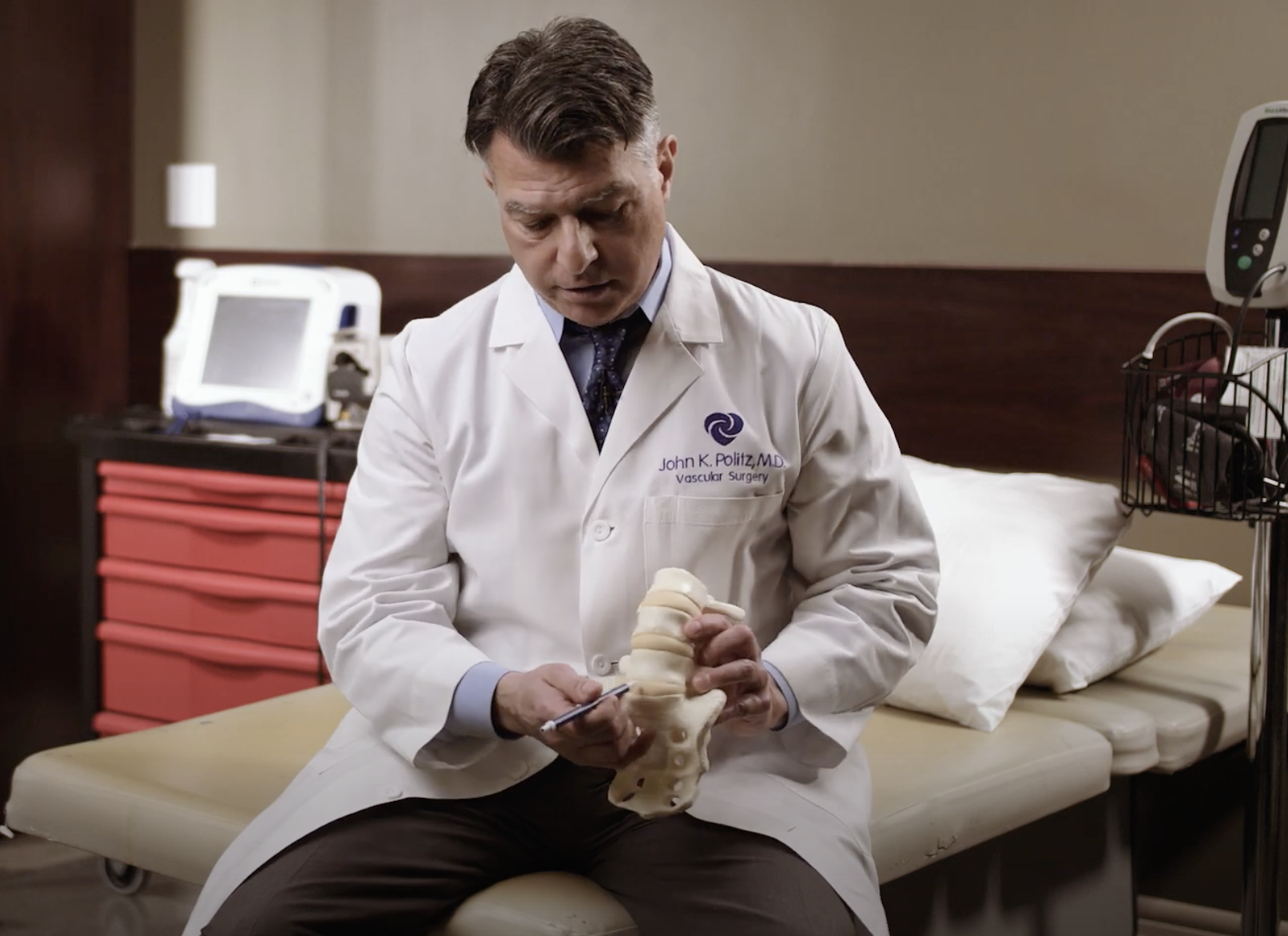Vascular surgeons are experts in the diseases and conditions of arteries and veins and all major blood vessels of the body except those of the heart and brain. Our expertise is in mobilizing, removing, repairing, and replacing these vessels. CTVS has been providing vascular services in Central Texas for more than 65 years.
Vascular surgeons are also asked to assist many other surgical specialists with their operations because of the proximity or association of the major blood vessels with the organs our colleagues are operating on.
Those specialists often include urologists, gynecologists, surgical oncologists, general surgeons, head and neck surgeons, orthopedic surgeons, and neurosurgeons.
“The latter two groups enlist our help when they choose to perform spinal fusion surgery on a patient,” says CTVS board-certified vascular surgeon Dr. John Politz.
Spinal fusion surgery is performed to heal fractures, correct instability in the spine, or repair degenerative discs, all of which are often coupled with severe back pain.
Most of the problems in the spine are corrected surgically from a posterior approach which is from the back. That is where the moving parts are located, where nerves are impinged, and where discs herniate or “rupture.”
The operation required is often a fusion operation where the disc is removed and bone graft and/or a prosthetic implant is replaced. The goal is to permanently connect the vertebra above with the vertebra below. This fusion of the spine prevents further movement at that joint and relieves the pain.
Fusions may be performed from a posterior (from the back), laterally (from the side), or an anterior (from the front) approach.
The anterior approach is known as an ALIF, or anterior lumbar interbody fusion.
How is an ALIF performed?
When the anterior approach is chosen, the orthopedic and neurosurgeon enlists the vascular surgeon to provide exposure of the spine by mobilizing the abdominal organs and major blood vessels. Once that exposure is provided, the spine surgeon can then remove all of the disc much more easily and place a much larger implant from the front than can be placed from either the back or the side.
The bigger the implant, the better the contact with the bone, the better the fusion, and no muscle is cut. No bone is removed. No nerves are pulled out of the way.
What are the advantages of an ALIF?
- A better fusion is performed.
- The operation is muscle sparing, meaning that no muscle is cut.
- The incision is not subjected to the pressure and moisture of incisions on the back and ismuch easier to monitor and keep clean.
- A cosmetic, natural skin crease incision that heals with less visibility is possible in many patients.
CTVS vascular surgeons perform approximately 300 of these operations each year. They work with all the spine surgeons across a three-county region on patients throughout Texas.
You can learn more about how vascular surgeons assist with the anterior approach to spinal fusion surgery through Dr. Politz’ detailed explanation here.
For questions about any of our vascular health services, please visit us at ctvstexas.com or call (512) 459-8753 to schedule an appointment with one of our specialists.
Don’t forget to follow us on Facebook and Twitter and check our blog for regular updates.

